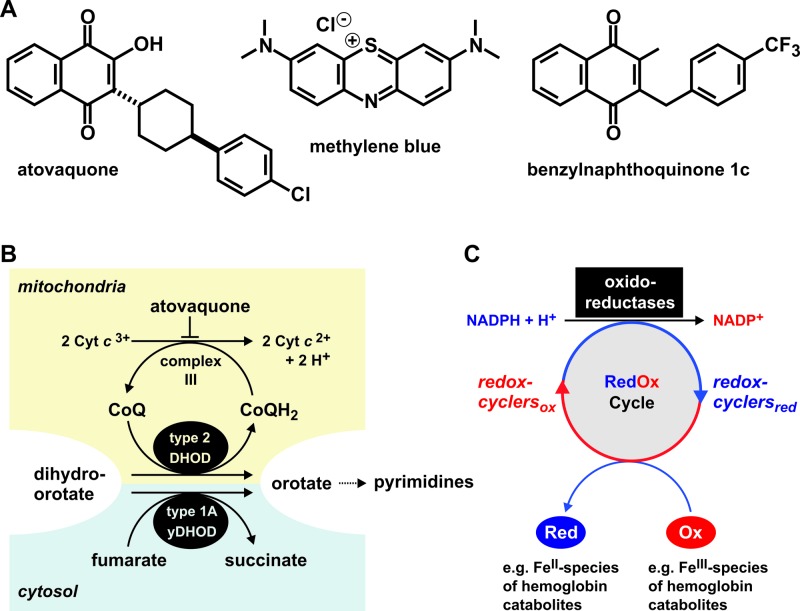Fig 1.
Structures and (potential) mechanisms of the antimalarial agents analyzed in the present study. (A) Comparison of the structures of the 1,4-naphthoquinone tautomer of atovaquone, methylene blue, and benzylnaphthoquinone 1c from reference 22. (B) Scheme of the targeted mitochondrial electron transport in atovaquone-sensitive P. falciparum parasites. Expression of a gene encoding yDHOD provides a cytosolic bypass in transgenic P. falciparum strains (14, 18). Such strains become independent of the mitochondrial electron transport chain and are therefore not only resistant to atovaquone but also to other antimalarials that target the mETC. (C) Model of the NADPH-dependent bioactivation and mode of action of methylene blue and benzylnaphthoquinone 1c (22, 23). See the text for details.

